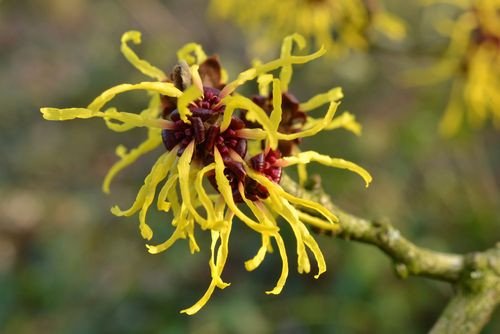What Is Witch Hazel? Plus 5 Health Reasons To Use It In Your Skin Care

If you’ve used a skin care product to treat blemishes, chances are you’ve encountered witch hazel, and for those that haven’t — it has nothing to do with witches, for the most part. The Food and Drug Administration (FDA) approved “golden treasure,” known scientifically as Hamamelis virginiana, is a popular herbal remedy commonly used as a natural cleanser and toner, but it does more than just give you clear skin. The special plant contains compounds and antioxidants that can help treat conditions like hemorrhoids and varicose veins.
Modern witches believe the versatile product, which is brewed in tea in its bark form, contains powers. These witches consider witch hazel a “magical herb,” using it to ward away evil and to heal broken hearts, The Atlantic reported. While that may sound like quackery, science gets behind this: Witch hazel bark tea can stop internal bleeding and also be injected into the anus to treat hemorrhoids.
The medicinal uses of witch hazel are extensive and can help treat these five health conditions:
1. Acne
The potent astringent has impressive anti-inflammatory effects due to the high level of tannins in the leaves. “Tannins have the ability to tighten, dry, and harden tissues,” Dr. Adebola Dele-Michael, a dermatologist at Radiant Skin Dermatology and Laser in New York City, told Medical Daily in an email.
This allows the skin to produce a protective layer that allows for proper blood flow and healing. It also helps reduce inflammation and protect the skin layers from bacteria while also stimulating moisture, producing hormones. Witch hazel, when used in moderation, also tightens pores without over-drying the skin.
“Unfortunately very often Witch hazel is preserved with tons (up to 30 percent) of alcohol, [which] makes [the] product too drying," Diana Ralys, skin therapist and owner of Diana Ralys Skin Health in Santa Monica, Calif., told Medical Daily in an email.
She suggests preserving it with natural, food grade preservatives and mixing it with other natural ingredients to make it even more soothing, like aloe vera juice.
2. Bruises And Infections
A traditional use for witch hazel is to soothe infections like poison ivy, and heal bruises and cuts, which are caused or exacerbated by viruses and bacteria. This astringent has an overall anti-inflammatory effect and an indirect antibacterial effect that makes it an ideal choice for minor cuts and bruises.
"[These] tactions will help to decrease the damage to surrounding tissue that occurs from the initial injury," Christina Shannon, clinical director of naturopathic medicine at Cancer Treatment Centers of America at the Midwestern Regional Medical Center for Cancer, told Medical Daily in an email.
A 2002 study published in the journal Research in Natural and Complementary Classical Medicine found significant antimicrobial activity for witch hazel when investigating its effect on bacteria and fungi such as Staphylococcus aureus, Candida albicans and other organisms in vitro. This could help prevent bacterial colonization, which plays a crucial role in atopic dermatitis and intertrigo dramatis, including other microbial skin conditions. Witch hazel can help treat poison ivy, chicken pox, and heal bruises and cuts exacerbated or originated from viruses and bacteria.
3. Hemorrhoids
Witch hazel can be used to soothe sore and swollen hemorrhoids. This ingredient has been used in over-the-counter hemorrhoid lotions and pads to effectively reduce the bleeding, itching, and discomfort many patients feel.
“Hamamelis has also been shown to be useful post surgically in a botanical combination cream to support healing, re-epothelization, and discomfort following protological surgery,” Shannon said. She emphasizes this supports the plant's traditional use to help with reducing hemorrhoids.
4. Sun Damage
The plant's antioxidant compounds can protect the skin from sun damage when it is applied topically. Witch hazel contains anti-inflammatory properties that can be useful in after-sun creams to decrease skin damage.
“Anti-inflammatory benefit after sunburn, meaning it can soothe sunburn pain and redness,” Dr. Cynthia Bailey, a dermatologist in Sebastopol, Calif., and founder of DrBaileySkinCare.com, told Medical Daily in an email.
Its effectiveness lies in its ability to soothe redness and lower the loss of the body’s natural moisture when applied to irritated skin.
5. Varicose Veins
This product can temporarily reduce swelling and pain associated with varicose veins. These veins can cause mild to moderate pain, blood clots, skin ulcers (sores), or other problems, according to the National Heart, Lung, and Blood Institute.
“The high levels of tannins help promote a protective cover on top of the skin. This layer helps the constriction of blood vessels, since it smoothes the different layers of the epidermis improving blood flow within the skin,” Ashley Lied, certified sports nutritionist at Trusted Nutrients told Medical Daily in an email.
Witch Hazel is FDA-approved but should be used with care.



























